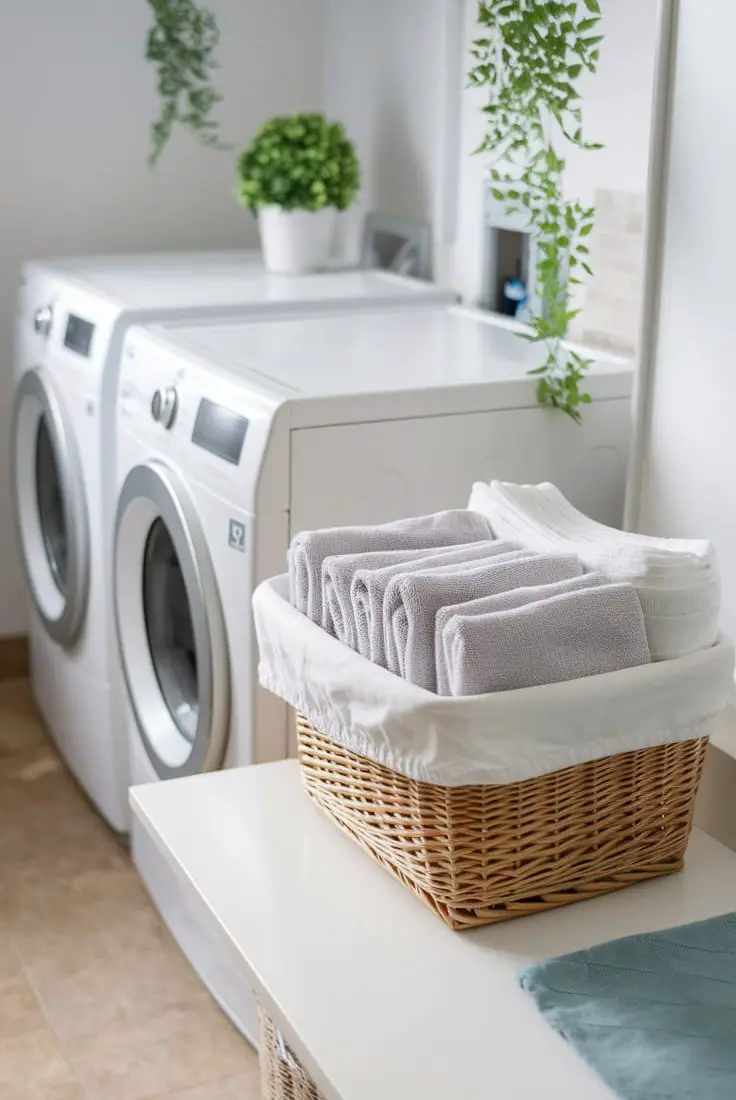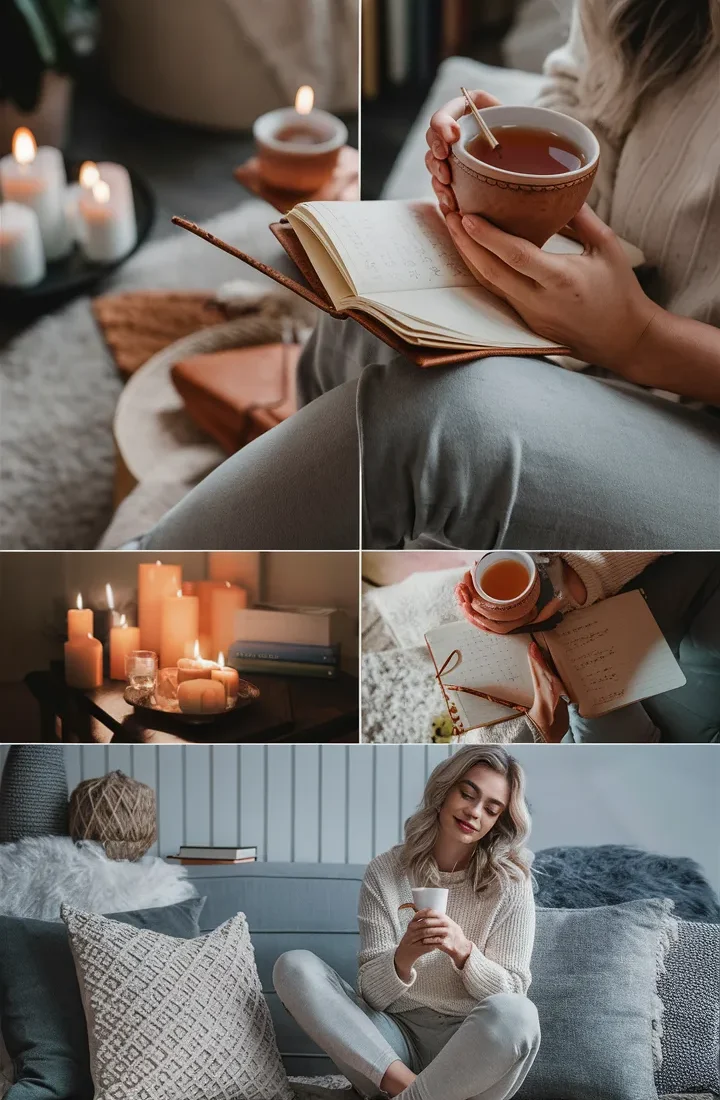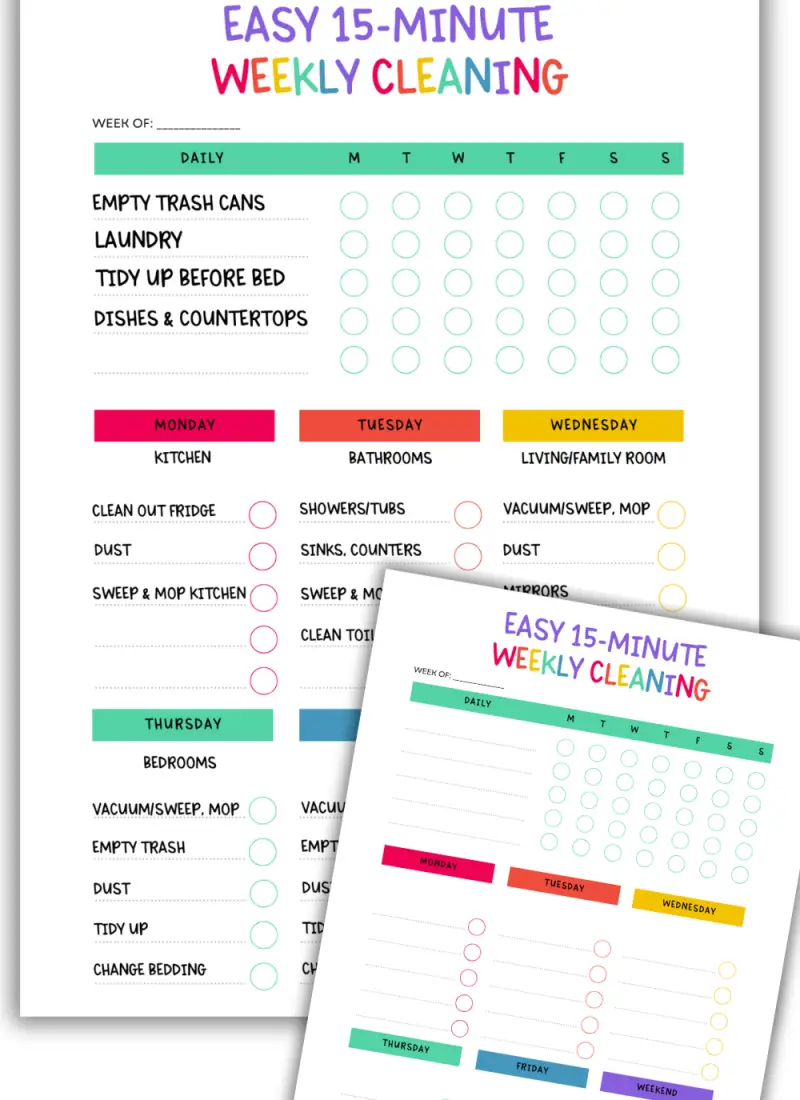Looking for mudroom ideas for an organized home? A well-designed mudroom can help you control daily clutter, keep dirt at bay, and make your home feel calm and tidy from the moment you walk in. In this guide, you’ll find practical, stylish, and affordable mudroom solutions to create an entry space that works hard and looks great.
👉 Summary:
This post covers 20+ mudroom ideas for an organized home, including built-in storage, small space solutions, budget-friendly products, and layout tips. You’ll also find links to smart storage tools, Amazon finds (tmsp29-20), and actionable advice that you can start using today.
This post may contain affiliate links, please read our disclosure policy to learn more.
Why a Thoughtful Mudroom Design Matters
A mudroom isn’t just a place to drop shoes and jackets — it’s the first point of contact between your home and the outside world. A well-thought-out design can save you hours every year and set the tone for a calmer, more organized household. Here’s why it’s worth getting right:
- Keeps Dirt at the Door: An organized mudroom acts like a buffer between the outside and the rest of your house. By providing spots for muddy boots, wet umbrellas, and dirty sports gear, you reduce the risk of bringing messes inside.
- Makes Mornings Run Smoothly: When everything has a designated spot, you don’t waste precious minutes searching for missing shoes, keys, or backpacks. This saves time and prevents the frustration of a frantic morning routine.
- Supports Family Habits: An organized space encourages good habits, especially for children. When there are hooks, bins, and cubbies designed just for them, kids are more likely to put their belongings where they belong.
- Adds Value to Your Home: A well-planned mudroom can be a strong selling point for future buyers. It’s highly sought after for its practicality and its ability to keep everyday mess under control.
- Acts as a Family Command Center: With a chalkboard for messages, a charging station for electronics, and a spot for mail and schedules, your mudroom can quickly evolve into the nerve center of your household.
The takeaway? Investing a little time and effort into designing an organized mudroom doesn’t just create a cleaner space — it improves the flow of your daily routine, making your home more functional and enjoyable for everyone.
1. Smart Storage Solutions for a Functional Mudroom
An organized mudroom starts with choosing storage options that fit your space and your family’s needs. The goal is to create a designated spot for every item — making it easy for everyone to grab what they need and put things away. Here are some ideas to consider:
Cubby Units
Cubby units are a mudroom staple because they work for families of all sizes. Assign a cubby to each person for their bags, shoes, and accessories. To make it even more functional:
- Add labels or name tags so every person knows which space is theirs.
- Use colorful bins or baskets inside each cubby to hide smaller items like gloves or scarves.
💡 Try this popular Cube Storage Organizer for a quick and customizable solution.
Hooks and Peg Rails
Hooks are a must-have in any mudroom because they make hanging coats and bags quick and easy — especially for kids.
- Position lower hooks for younger family members.
- Use a mix of hook sizes for scarves, purses, and pet leashes.
✅ Wall-Mounted Coat Hooks work well and can be arranged to fit any space.
Shoe Racks and Trays
Prevent trips and tumbles caused by a jumble of shoes.
- Use a multi-tier shoe rack for high-traffic areas.
- Place a boot tray near the door for wet or muddy shoes.
👉 Check out this Sturdy Shoe Rack for a solid, space-saving option.
Baskets and Bins
Baskets and bins make corralling everyday essentials like mittens, scarves, and dog leashes a breeze.
- Choose durable bins that can handle daily wear and tear.
- Clearly label bins for quick access.
- Store bins on upper or lower shelves, making frequently used items easiest to grab.
Why Smart Storage Matters
Smart storage doesn’t just save space — it saves sanity. By giving every item a dedicated spot, you reduce clutter and create a routine that benefits the whole family. The best part? You can customize it to match your space, making your mudroom as beautiful as it is functional.
2. Incorporate Seating for Convenience and Comfort
Seating is an often-overlooked element of a well-designed mudroom, but it makes a huge difference in how this space works for your family. A spot to sit encourages orderly habits, making it simple for both kids and adults to remove shoes, set down bags, and get ready for the day. Here’s how to incorporate seating that’s both stylish and functional:
🪑 Built-In Benches
A built-in bench can instantly create a cozy, custom feel.
- Why It Works: Provides a stable spot to sit while putting on or removing shoes.
- Additional Storage: Choose a bench with built-in cubbies or drawers for shoes, sports equipment, or winter accessories.
✅ Try a Storage Bench with Shoe Rack for an all-in-one solution.
🛋️ Ottoman-Style Seats
For smaller spaces or multi-use areas, an ottoman-style seat offers versatility.
- Use it for sitting or as a soft surface for setting down bags and packages.
- Pick an option with a removable top for hidden storage.
✅ Check out this Ottoman Storage Bench for a space-saving option.
🪵 Rustic or Decorative Benches
If your mudroom has a farmhouse or rustic vibe, a simple wood or metal bench can be both practical and attractive.
- Pair with a cushion for comfort.
- Position a boot tray or shoe rack right underneath.
⚡️ Why Seating is a Must-Have
A well-placed seat goes beyond convenience — it improves the overall functionality of your mudroom.
- Helps younger children manage footwear and outerwear independently.
- Reduces mess by creating a space where people can sit down rather than balance precariously while removing shoes.
- Provides a spot to set down heavy bags when coming in the door.
3. Vertical Space Optimization: Making the Most of Every Inch
When floor space is tight, your walls are your best friend. Vertical space optimization allows you to create a highly functional mudroom that feels open and organized, no matter its size. Here’s how to do it:
🪝 Install Wall Hooks and Peg Rails
Hooks are ideal for hanging jackets, backpacks, scarves, and dog leashes — making it easy for every family member to grab their belongings as they walk out the door.
- Position hooks at varying heights for adults and children.
- Consider a long peg rail for a sleek, customizable look.
✅ Check out these Rustic Wall-Mounted Coat Hooks.
📦 Use Floating Shelves
Floating shelves add storage space for bins, baskets, and decorative touches, keeping smaller essentials organized and within easy reach.
- Install a shelf above a bench for added storage.
- Use labeled bins or decorative baskets to corral scarves, mittens, and dog accessories.
✅ Try these versatile Wall Shelves for a polished look.
🚪 Over-Door Organizers
Make use of the space on the back of the door for smaller items like hats, gloves, or cleaning supplies.
- Choose a multi-pocket organizer for maximum storage.
✅ Check out this Over-Door Organizer for an easy space upgrade.
🔝 Tall Cabinets and Vertical Lockers
If space allows, tall cabinets and lockers can be a game-changer.
- Store seasonal gear, sports equipment, and bulky items.
- Pair with lower cubbies for a balanced design.
✅ Consider a Tall Storage Cabinet for all your mudroom storage needs.
⚡️ Why Vertical Space Optimization Matters
By utilizing walls, doors, and ceilings, you gain storage space that doesn’t cost precious floor area. Vertical space optimization makes it easy to stay organized and gives every item a designated spot, making your mudroom more functional, user-friendly, and welcoming.
4. Seasonal Organization Strategies: Stay Prepared All Year Long
A well-maintained mudroom evolves with the seasons. By creating a flexible space that accommodates changes in weather and activities, you’ll save time, reduce clutter, and make every transition smoother. Here’s how to stay organized throughout the year:
❄️ Winter Gear
During the cold months, mudrooms bear the brunt of snowy boots, bulky jackets, and countless mittens.
- Assign a Bin for Each Family Member: Store gloves, scarves, and hats in individual bins or baskets.
- Use a Boot Tray: Protect your floor from melting snow and salt.
✅ Check out this Waterproof Boot Tray for a durable solution.
🌷 Spring Refresh
As temperatures rise, pack away heavy winter gear and shift focus to rain jackets, light layers, and sports equipment.
- Declutter and Store Off-Season Items: Use vacuum-sealed bags or bins for winter coats and boots.
- Make Space for Rain Gear: Install hooks for umbrellas and raincoats.
☀️ Summer Simplification
Warm weather means trips to the park, sports practice, and summer vacations.
- Add a Beach Bin: Store sun hats, swimsuits, and sandals in one easily accessible spot.
- Use a Tote Station: Hang or stash tote bags for quick summer outings.
🍂 Fall Transition
Back-to-school season demands a refresh in the mudroom.
- Add a Backpack Station: Install hooks or cubbies for bookbags and lunchboxes.
- Stock Up on Layers: Make space for jackets, scarves, and rain boots.
✅ Try these Sturdy Wall Hooks for heavy coats and bags.
⚡️ Why Seasonal Organization Works
Rotating mudroom contents doesn’t just reduce clutter — it also ensures every item is easy to find when you need it. By thinking ahead and adapting your space to the seasons, you save time, reduce stress, and maintain an orderly entryway that works year-round.
5. Design for Small Spaces: Big Functionality in Compact Areas
Not everyone has a dedicated mudroom — and that’s okay. With smart design choices, even a tiny entryway, hallway, or closet can serve as an effective mudroom. Here’s how to make the most of a small space while still achieving that organized, clutter-free feel:
🚪 Convert a Closet into a Mini Mudroom
If you have a coat closet near your entryway, consider transforming it:
- Remove the door to open up the space visually.
- Add a slim bench, hooks, and shelves inside.
- Use bins on the floor or upper shelf for seasonal gear.
💡 Tip: If removing the door isn’t an option, install over-the-door storage for hats, gloves, and small accessories.
🧲 Use Every Vertical Inch
Small spaces demand creative use of walls and doors:
- Install tall, narrow shelving or slim storage towers.
- Mount magnetic strips for keys, sunglasses, and small tools.
- Hang baskets or fabric organizers directly on walls.
✅ See our guide on Storage Ideas for Small Spaces for more space-saving inspiration.
🪑 Pick Multi-Functional Furniture
Choose furniture that serves more than one purpose:
- A storage ottoman can act as a seat and hidden bin.
- A slim bench with cubbies underneath maximizes function without taking up too much room.
✅ Consider this Compact Storage Bench for tight areas.
🔄 Modular and Movable Pieces
Don’t be afraid to use pieces that can shift with your needs:
- Rolling carts with baskets can double as mudroom storage and utility space.
- Stackable bins let you adjust your setup seasonally.
⚡️ Why Small-Space Mudroom Design Matters
A well-designed small mudroom area keeps clutter from creeping into your living space. By carefully choosing pieces that maximize storage without overwhelming the area, you create a functional, welcoming entryway — no renovation required.
6. Maintain Organization with Simple Habits: The Secret to a Long-Lasting Mudroom
The best mudroom ideas for an organized home aren’t just about design — they’re about habits. Even a perfectly designed space can quickly descend into chaos if it’s not used intentionally. Here’s how to create simple daily routines that keep your mudroom clean and clutter-free:
⏳ 1. Do a 2‑Minute Daily Reset
Each evening, spend just two minutes putting items back where they belong. Hang coats, return shoes to the rack, and place stray items in their bins.
✅ Check out more tips in our post on 15‑Minute Daily Cleaning Tips for the Whole House.
🗑️ 2. Declutter Frequently
Get in the habit of decluttering your mudroom every few weeks. Ask yourself:
- Do we use this item?
- Is it in the right spot?
- Could it be stored elsewhere?
👉 Learn more about common pitfalls in our guide on Decluttering Mistakes You Might Be Making.
👕 3. Switch Items Seasonally
At the start of each new season, rotate the contents of your mudroom.
- Put away bulky winter coats and make space for spring jackets.
- Switch out summer sandals for fall boots.
✅ If you struggle with parting from things, read How to Declutter When You Can’t Throw Anything Away.
🗓️ 4. Weekly “Power Tidy” Session
Once a week, spend 10–15 minutes checking your mudroom for any overflow or misplaced items. This quick routine makes sure the space doesn’t evolve into a cluttered catch-all.
🔥 5. Get Everyone Involved
Assign family members responsibility for their own spaces. Encourage kids to hang their coats, put away shoes, and return gear to its spot every day.
✅ Teach habits early — and if you’re looking for more ideas, see Habits of Disorganized People and How to Overcome Them.
⚡️ Why Simple Habits Matter
Even the best mudroom design can only do so much. Small daily and weekly habits are the secret sauce that keeps your space orderly long term. By making it a routine, you create an entryway that welcomes your family every day — no matter how busy life gets.
❓ Frequently Asked Questions about Mudroom Ideas for an Organized Home
What is the best layout for a mudroom?
The best layout depends on your space, but aim for seating, shoe storage, and hanging space. Use vertical storage to maximize small areas.
How do I keep my mudroom from getting messy?
Assign a spot for everything, use labeled bins, and do a quick tidy daily. A weekly reset helps keep it under control.
Can I create a mudroom without a dedicated room?
Yes! Use a wall, closet, or even a small entry nook with hooks and a bench to create a functional mudroom.
What’s the easiest mudroom upgrade on a budget?
Add a boot tray, a few sturdy hooks, and a small rug — quick, affordable, and effective!
Final Thoughts: Make Your Mudroom Work Hard for You
A well-designed mudroom doesn’t just reduce clutter — it streamlines your daily routine and gives your family a smoother, calmer way to move in and out of the house. By choosing smart storage, making use of every inch of space, and adopting simple habits, you can transform this hardworking area into one that truly supports your household every day.
Remember, the best mudroom ideas for an organized home are the ones tailored to fit your family’s habits and space constraints. You don’t have to implement every tip at once — start with a single upgrade, like adding a storage bench or introducing a daily reset routine, and build from there. The result? An entryway that’s functional, inviting, and a reflection of your unique style.
✅ Try These Tips Today!
- Pick one storage upgrade to implement this weekend.
- Spend a few minutes tonight clearing out your mudroom area.
- Pin this post for later or share it with a friend looking for mudroom ideas for an organized home!
💬 What’s Your Favorite Mudroom Tip?
Drop a comment below and tell us which tip you’re trying first — or share your best mudroom organization hack. We’d love to hear from you!




Leave a Reply